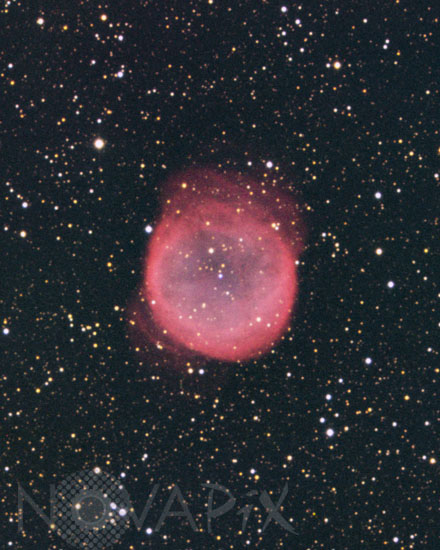Photo Agency - Astronomy - Space - Nature

A planetary nebula, NGC 6781
author: Anglo-Australian Observatory/David Malin Images/Novapix
reference: a-nep67-81001
Image Size 300 DPI: 40 * 51 cm
This fairly inconspicuous planetary nebula is in Aquila and it marks the end of the long life of a sun-like star. Despite the longevity of their parent stars and the very brief lifetime of the nebula (typically less than 100,000 years) such sights are common because sun-like stars are common. The nebula has nothing to do with planet formation, indeed the formation of the nebula would effectively destroy any planets the parent star had, rather the name refers to the telescopic appearance of the nebula. Some planetaries are very bright and their discs look like solar system planets. A close look at this picture shows some structure in the expanding shell of gas around the star, reminiscent of the much more complex Helix nebula. The nebula we see is the ejected surface of the star expanding into material left from an earlier stage in its decline, when it briefly expanded as a 'red giant'. Irregularities in the earlier ejecta, asymmetrical outburst of the central star and motion of the new nebula through the interstellar medium as well as the star's orientation in space all affect the physical form of planetary nebulae, so a detailed interpretation of the outburst is difficult. The common factor is the central star, which is exteremly hot. However, it is stripped of its energy source and destined to cool into oblivion long after the nebula has dispersed.
Keywords for this photo:
AAO - AQUILA - ASTRONOMY - DWARF - EAGLE - EVOLUTION - NEBULA - NGC 6781 - PLANETARY NEBULA - POSTER - SIDING SPRING - STAR - WHITE DWARF -
Contact : Stéphane Aubin +33-(0)9-51-26-53-76
© Novapix - All rights reserved


